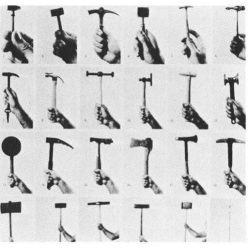
Object-based learning is a key approach in teaching design history and theory. As a design historian, having done my PhD at the V&A, researching and teaching with objects, is a fundamental part of my everyday practice. However, while I often employ object-based learning, taking it somewhat for granted rather than considering it an ‘innovative’ pedagogy, this online session was useful to place that approach in its wider context. It also gave me the opportunity to reflect on some issues that I have encountered with object-based learning that I will summarise below.
A key author on object-based learning in art and design is Kirsten Hardie. In her research on the subject, Hardie summarises the way she used objects to incite students’ curiosity and facilitate discussion around wider cultural and theoretical discourses. (Hardie, 2015).
However, while object-based learning is engaging, active and playful, and I have consistently received positive feedback from students about it, I personally find these sessions to be slightly disappointing in enabling students to develop their knowledge of a particular theoretical or conceptual idea.
For example, if objects are used to discuss issues of taste (as in Hardie’s work), I would normally structure such sessions with the aim of helping students understand and engage with particular theoretical ideas. In the case of taste, it might be Bordieu’s idea of cultural capital or habitus that I would want students to engage with. What I have found in my teaching, though, is that undergraduate students often find it hard to make that leap from discussing the materiality of an object (and their own emotional, intellectual, tactile responses to it) to a wider discussion of ideas/concepts. That is, students often struggle to relate objects to theoretical ideas, to contextualise them and to apply a more critical vocabulary to scrutinise them.
Since the aim of contextual and theoretical studies (what I teach at LCC) is to support students in contextualising design practice in its wider theoretical/historical/cultural context, that leap from visual/material analysis to theoretical framing seems particularly important. I don’t have any particular answers to how this may be achieved, but one of my critiques of research into OBL in art and design is an absence of reflection on how effective this approach to teaching actually is in supporting students to truly engage with wider theoretical and contextual knowledge that underpins their discipline.
Hardie, K. (2015). Engaging learners through engaging designs that enrich and energise learning and teaching. In: Chatterjee, H. and Hannan, L. (eds.). Engaging the senses: object-based learning in higher education. Farnham: Ashgate, pp. 21-42
